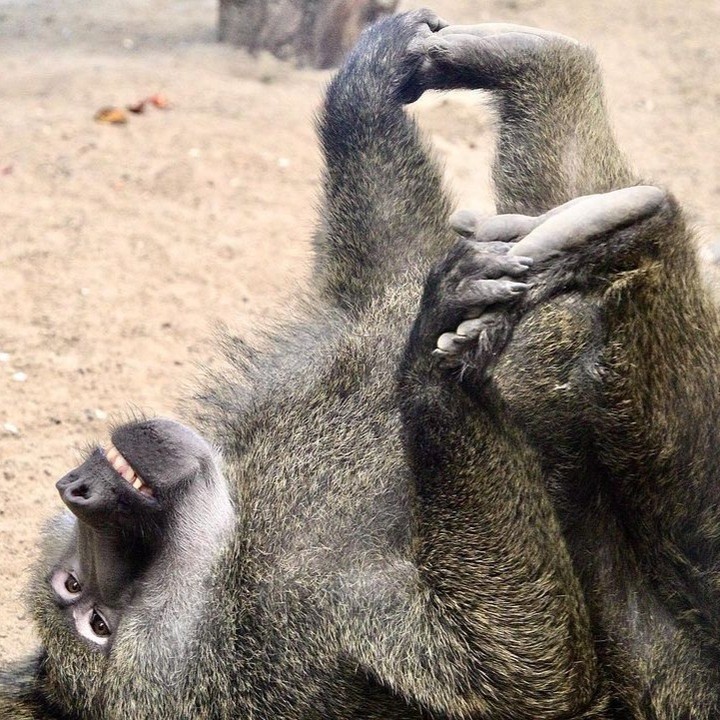Summary:
1. The Happy Baby yoga pose is often compared to the behavior of olive baboons in the wild.
2. Olive baboons are highly social primates with unique and fascinating characteristics.
3. Understanding the similarities between the Happy Baby pose and olive baboons can deepen our appreciation for yoga and nature.
4. Exploring the connection between yoga and animals can inspire a greater sense of connection with the natural world.
5. Embracing the Happy Baboon concept can encourage us to approach yoga with a lighthearted and playful attitude.
When practicing yoga, it’s common to find poses with unique names that evoke images of animals and nature. One such pose is the Happy Baby pose, which invites us to mimic the blissful abandon of infants lying on their backs, joyfully kicking their legs into the air. However, let’s take a moment to explore an alternative perspective: we don’t just have a happy baby on our yoga mat, but a remarkable creature from the wild – the olive baboon.
1. The Happy Baby yoga pose is often compared to the behavior of olive baboons in the wild.
While the Happy Baby poses may seem all too human, it turns out that olive baboons exhibit a similar level of delight and exuberance in their daily lives. These primates, native to parts of Africa, including the savannas and woodlands, are highly social animals. They live in large troops of up to 200 individuals, forming intricate social hierarchies, just like the interconnectedness we experience in yoga communities.
2. Olive baboons are highly social primates with unique and fascinating characteristics.
One of the most captivating aspects of olive baboons is their intelligence. They possess a complex social structure, with individuals displaying a range of personalities, from dominant leaders to nurturing caretakers and playful spirits. Similarly, in yoga, we gather in communities where we can learn from and support one another, embracing our individuality while finding unity in our shared practice.
Olive baboons are known for their grooming rituals, which include meticulously cleaning fur, removing parasites, and fostering strong social bonds. This behavior mirrors the self-care and attention we give ourselves during yoga practice – not just physically, mentally, and emotionally.
3. Understanding the similarities between the Happy Baby pose and olive baboons can deepen our appreciation for yoga and nature.
By drawing parallels between the Happy Baby pose and the enchanting nature of olive baboons, we can create a deeper connection to the animal kingdom and our yoga practice. As we find joy and freedom in the pose, baboons express their joyful nature through exuberant play, swinging through trees, and engaging in boisterous activities. This shared enthusiasm reminds us of the innate happiness in the simplest actions.
Furthermore, the similarities extend beyond mere physicality. Practicing the Happy Baby pose can remind us of the beauty and grace of baboons, encouraging us to respect and protect their natural habitats. Deepening our knowledge and appreciation for wildlife can inspire us to approach our yoga practice with a renewed sense of purpose and connection.
4. Exploring the connection between yoga and animals can inspire a greater sense of connection with the natural world.
Yoga has always sought to create a harmonious balance between body, mind, and spirit. By recognizing the kinship between yoga poses and animal behavior, we can develop a heightened awareness of our place within the natural world. Each pose, including the Happy Baby, becomes an opportunity to connect with the animals who share our planet and the ecosystems we all depend on.
Moreover, by exploring the connection between yoga and animals, we open ourselves to a deeper understanding of the intricate tapestry of life. We realize that we are not separate from nature but integral to it. This realization can foster a greater sense of responsibility, motivating us to protect and preserve the diversity of species that make our planet extraordinary.
5. Embracing the Happy Baboon concept can encourage us to approach yoga with a lighthearted and playful attitude.
Yoga is a transformative practice that allows us to tap into our inner strength, flexibility, and balance. However, it’s important not to take ourselves too seriously. The concept of the Happy Baboon can infuse our yoga practice with a lighthearted and playful attitude, reminding us to approach each pose with a sense of joy and curiosity.
Just as olive baboons find pleasure in their daily activities and interactions, we, too, can find delight in exploring the full range of movements and sensations our bodies are capable of during yoga. By embracing the Happy Baboon, we can release any self-judgment or pressure to perform perfectly and instead celebrate the unique experience of our practice.
In conclusion, the Happy Baby yoga pose may be known by many names, but referring to it as the Happy Baboon allows us to delve deeper into the enchanting world of olive baboons. By recognizing their social nature, unique characteristics, and joy for life, we can broaden our understanding of yoga and our connection to the natural world. So, the next time you find yourself in the Happy Baby pose, imagine yourself as a spirited baboon, playfully exploring the world around you.
*****
Source Description
You may call this yoga pose Happy Baby, but we call it Happy Baboon.
📸: Olive baboon Quinn by @alexis.photography311


